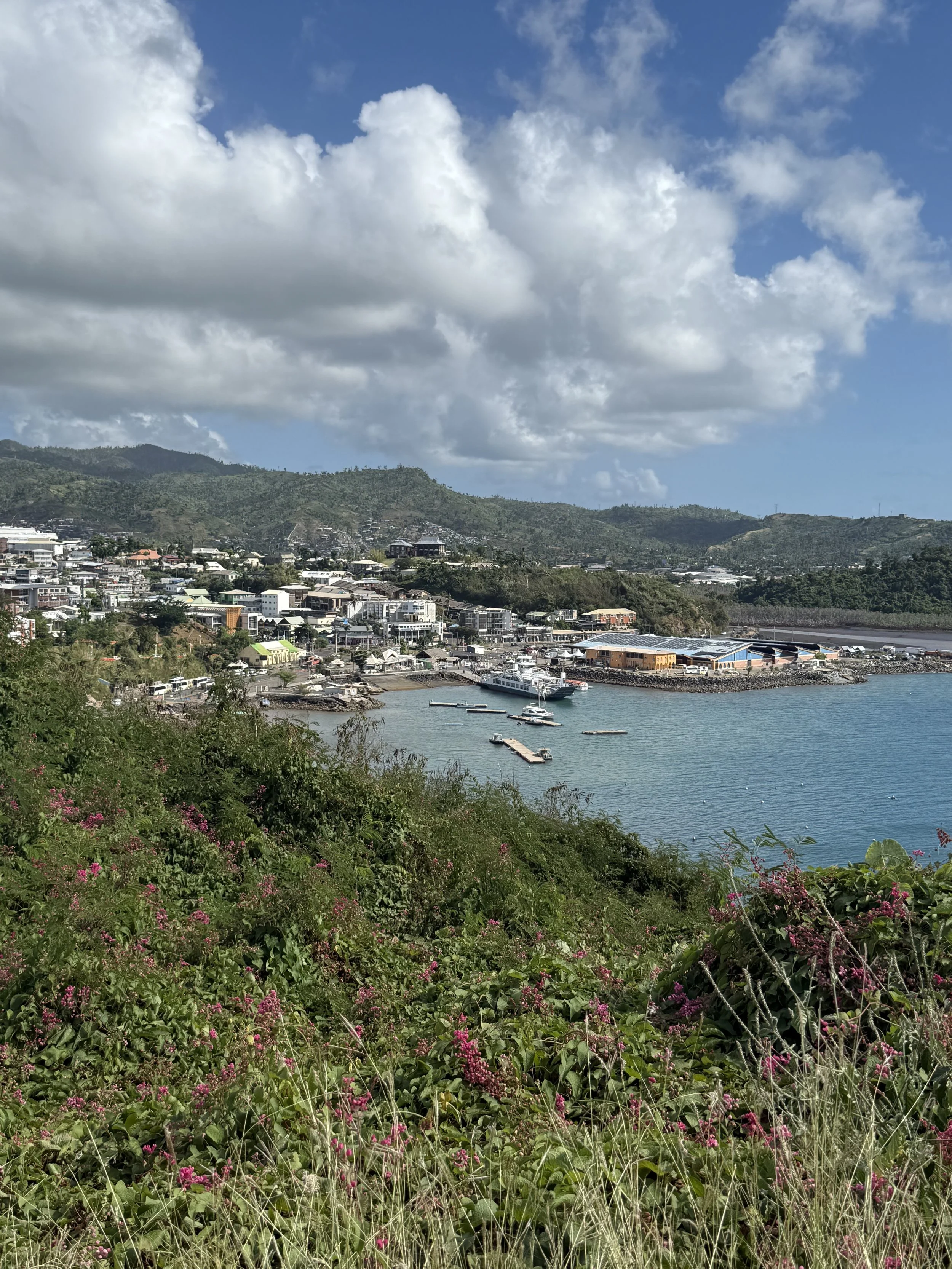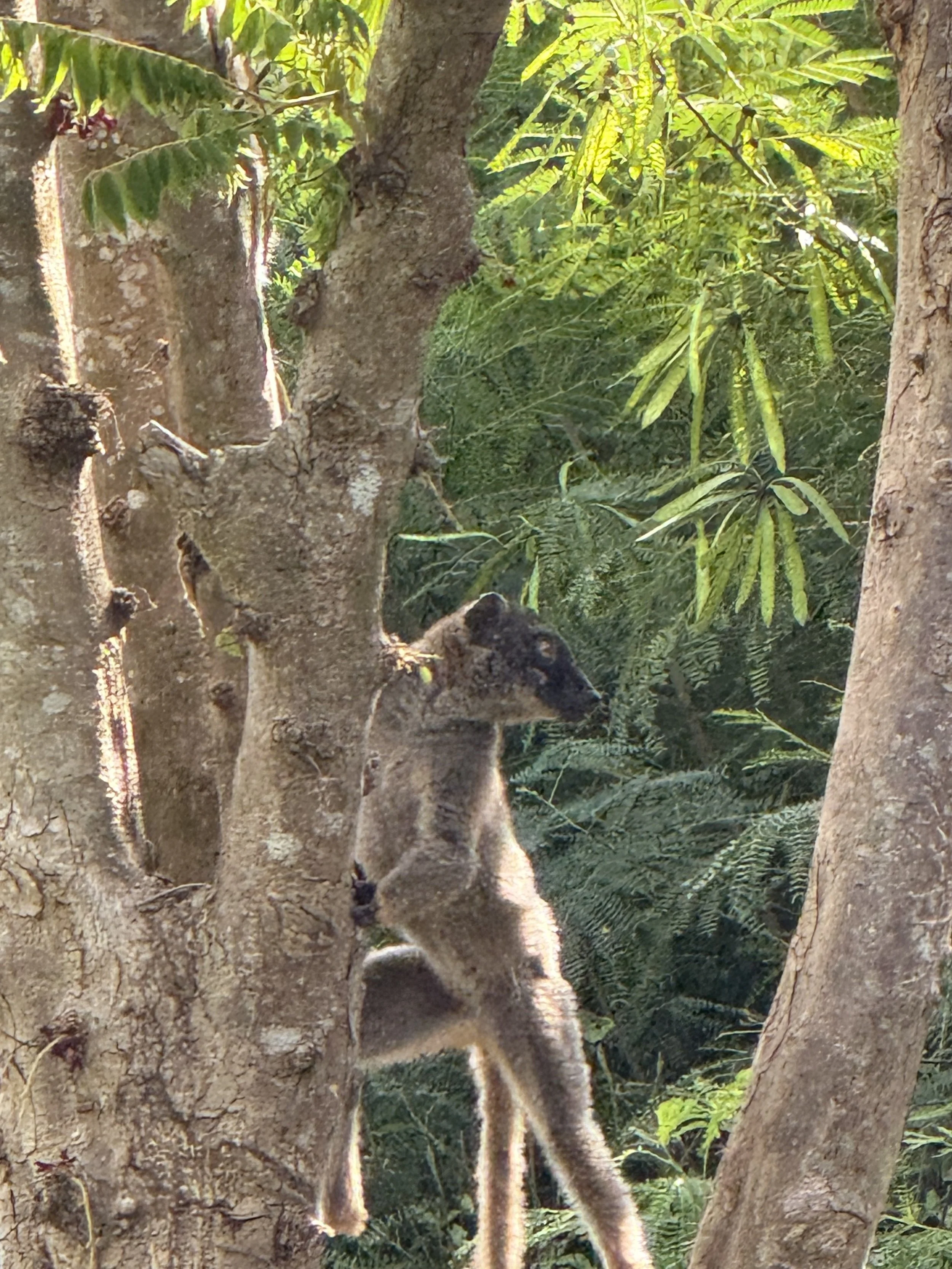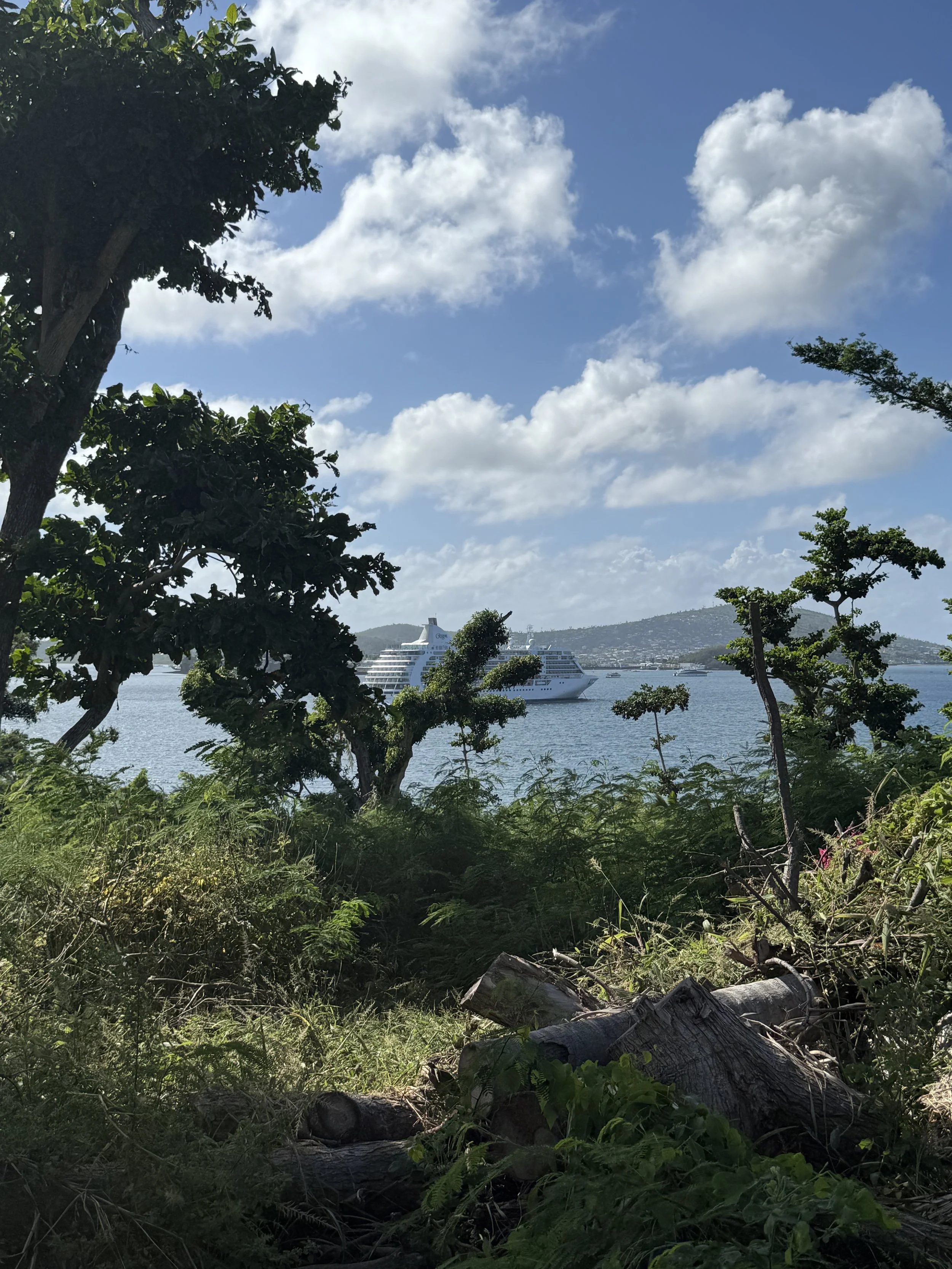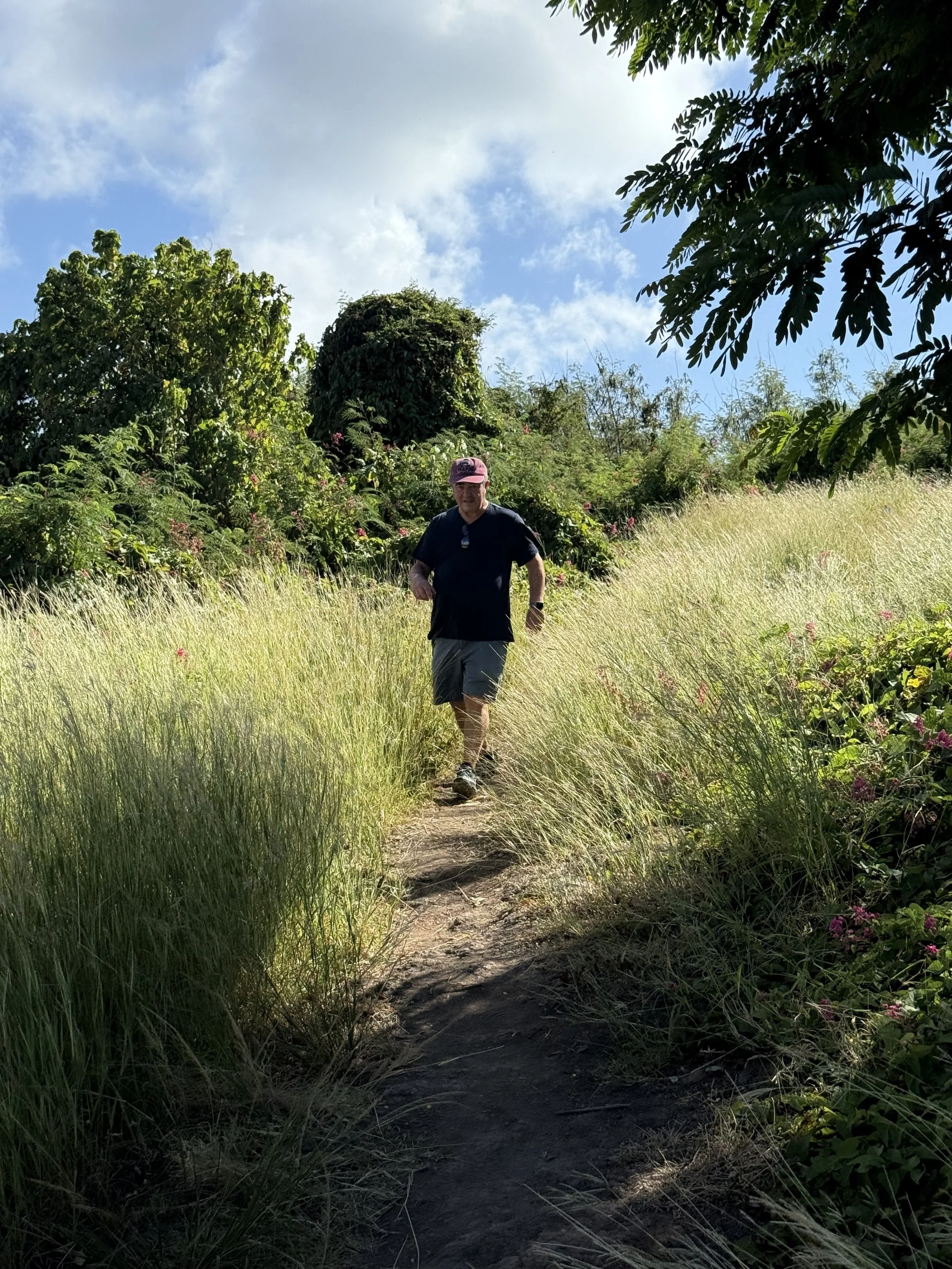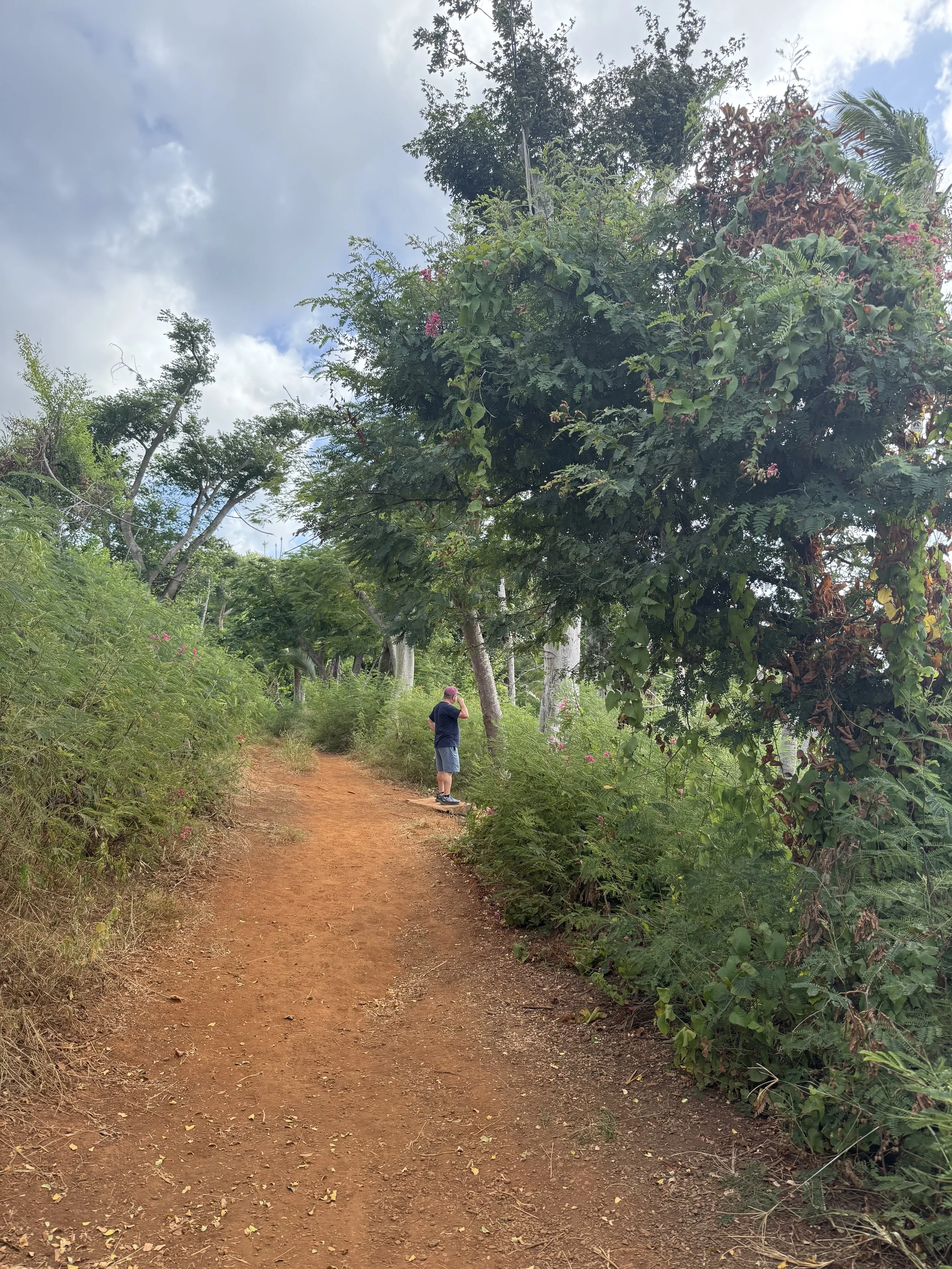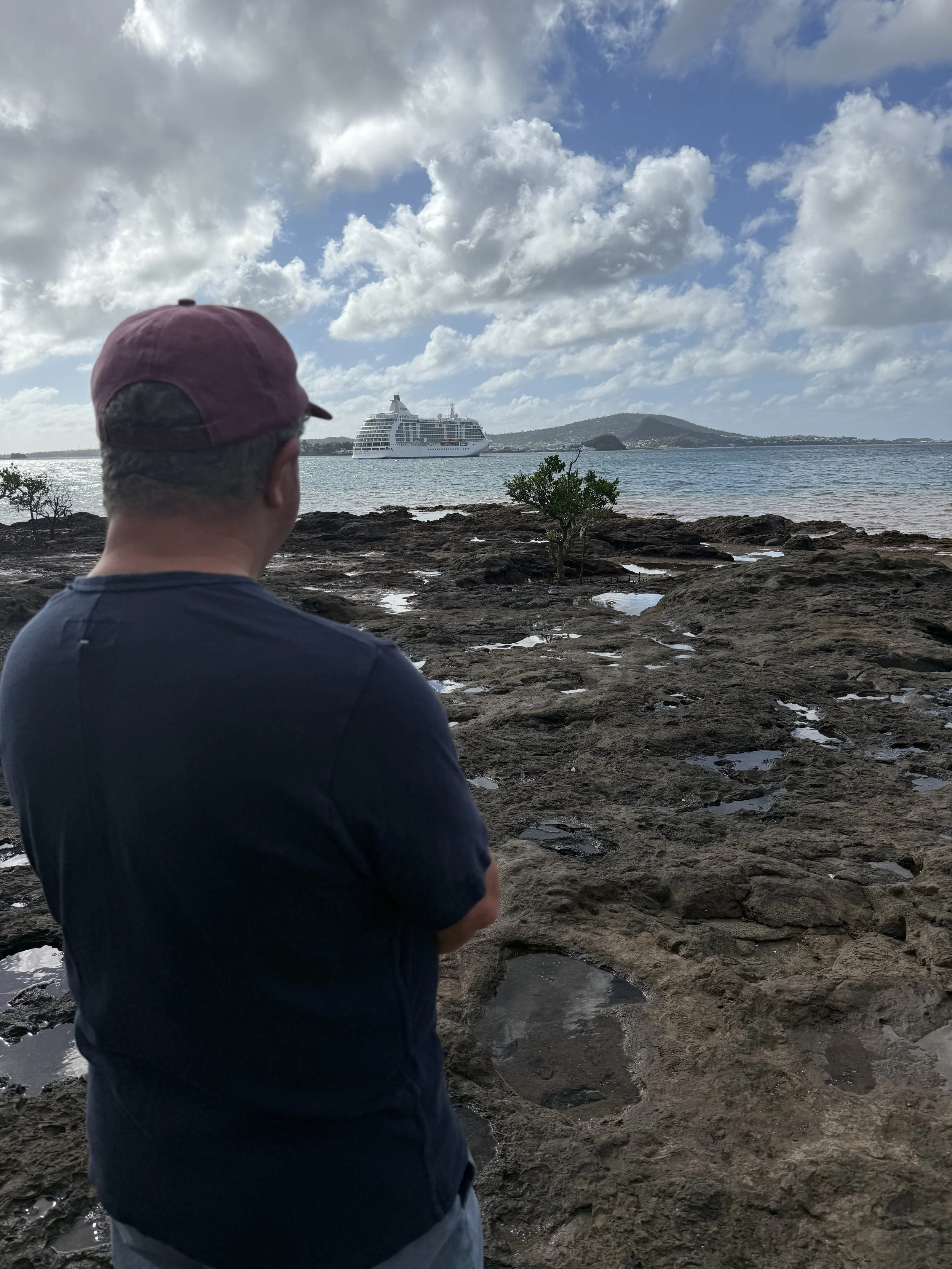Mayotte: Getting Lost, Found, and Led by a Silent Guide
Sometimes when we cruise, we book tours months in advance, planning every kayaking, snorkeling, hiking, or museum stop with military precision. And then… sometimes we just wing it. That was our approach in Mayotte, part of the French Comoros, where the tours on offer didn’t really float our boat. So, armed with our walking shoes and curiosity, we decided to wander the port town and see what we could discover.
A bit of context: Mayotte is a little-known tropical gem, technically an overseas department of France, nestled in the Mozambique Channel between Madagascar and Mozambique. Geopolitically, it’s fascinating: while it’s French (complete with euro currency, French schools, and gendarmes), it’s culturally and linguistically tied to the Comoros archipelago — which voted for independence decades ago while Mayotte opted to stay French. The result? A place where French bureaucracy meets island rhythms, and you hear French, Shimaore, and Malagasy all at once. Geographically, it’s a lush volcanic island ringed with mangrove forests, coral reefs, and black volcanic beaches — but also vulnerable to severe weather.
In late 2024, Mayotte was hit hard by a major cyclone, one of the most damaging storms the island has seen in decades. Many areas, including parks and coastal paths, were still littered with storm debris, broken infrastructure, and downed trees. While there were pockets of locals repairing small sections, a lot of the cleanup seemed stalled, with residents waiting for recovery funds and assistance from the French government — a reminder of the complexities of being a distant overseas territory. The local economy, which relies heavily on agriculture, fishing, and small-scale tourism, has felt the sting of delays, making recovery a slower, more bureaucratic process than many had hoped.
First Off the Boat, First Into Adventure
We hopped on the first tender off the ship — eager, caffeine-fueled, and ready to explore. As we stepped onto the dock, we were immediately greeted by fishermen hauling in their catch and local women playing wooden instruments and singing. It felt alive — vibrant, musical, and totally charming.
The local tourism group had set up a little welcome area where you could grab maps and advice. We asked for a good walk and were pointed toward a botanical garden up on a hill. "Head left, stay left at the roundabout, go up the hill." Easy enough, right?
We set off, weaving through vendor stalls, dodging scooters, crossing traffic (and then crossing back again because we were on the wrong side), all while soaking in the sights and sounds of town life.
Surprise Guide with a Neon Vest
About five minutes into our stroll, a woman in a tourism staff shirt and a neon yellow vest appeared beside us. She wore the local m'sindzano — a beautiful traditional face paint made from ground sandalwood, used for sun protection and beauty. She was walking very close behind us, so I turned to acknowledge her, and she simply said, "Accompany."
I was confused at first (was she offering to join us? warn us? charge us?). Mike, a few steps ahead, just smiled and kept walking, and before long, it became clear: she wasn’t leaving.
So, we adopted her as our silent tour guide. She spoke no French or English, only Shimaore, the local language, but she stayed calmly by our side, guiding us up the rough trails of the old botanical park.
Nature Walk Through a Storm’s Aftermath
The botanical park had definitely seen better days. The cyclone from late 2024 had left its mark: tree tops sheared off, paths buried in brush, storm debris scattered everywhere. But what struck us most was how little had been cleared — it seemed locals were largely waiting on French recovery funds before tackling the major cleanups. While the economy here depends on tourism, fishing, and agriculture, many of the bigger fixes were in limbo, stuck in red tape. It was a reminder that being part of France comes with benefits — but also delays.
We climbed to the overlook, took in sweeping views of the island, and snapped some photos. Then we descended toward the beach, where black volcanic rocks, driftwood, and the occasional stray boat framed the shore. It was rugged and raw — the kind of coastline where you half expect to find pirate treasure.
Along the way, we met a jogger and a friendly schoolteacher, who pointed out some local lemurs — smaller and browner than their famous Malagasy cousins, with less bushy tails but just as much charm. With a few whistle calls, the teacher lured them closer, and we got to watch them hopping through the trees. Lemurs in the wild? Always a win.
A Wordless Trek, A Grateful Goodbye
About an hour and a half later, we strolled back through the town, our silent guide still by our side. She never spoke — only used hand gestures to show us points of interest, helped us navigate tricky paths, and even took a few pictures with us. Her calm, steady presence made the whole adventure feel smooth and safe.
Back at the dock, we gave her a warm thank-you (and, of course, a nice tip), and just like that, we were back aboard the ship in time for lunch — salty, sun-kissed, and grinning.
Mayotte surprised us: no big-ticket excursions, no tightly planned tours — just a spontaneous, quirky, and slightly rough-around-the-edges adventure in a place still waiting on its next chapter of recovery. We left hopeful that when we (or other visitors) return, we’ll see more progress — and maybe even a cleaned-up trail or two.
Stay tuned for our next stop — who knows what (or who!) we’ll meet next?






